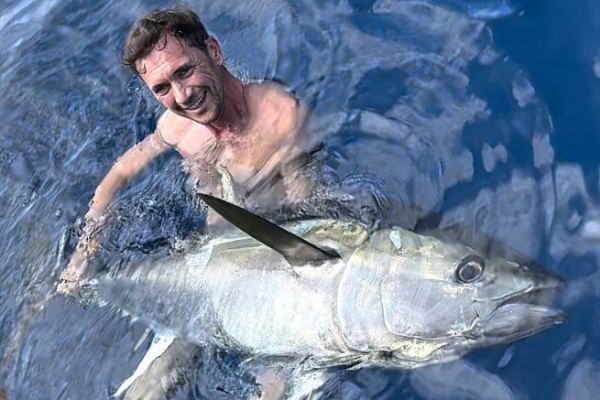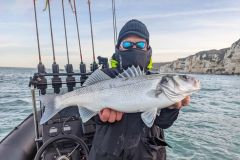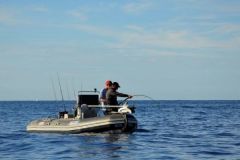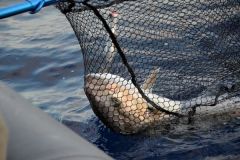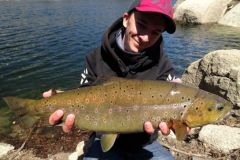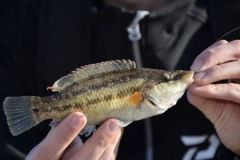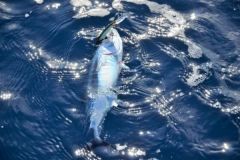Scientific name
Thunnus thynnus (Linné, 1758)
Morphology
Bluefin tuna have an elongated, fusiform body. It is massive and built for fast swimming. Its first dorsal fin is yellow or bluish, while the second is higher and reddish-brown. Its back is dark blue, and its lower flanks and belly are silvery with colorless transverse stripes alternating with rows of colorless dots.
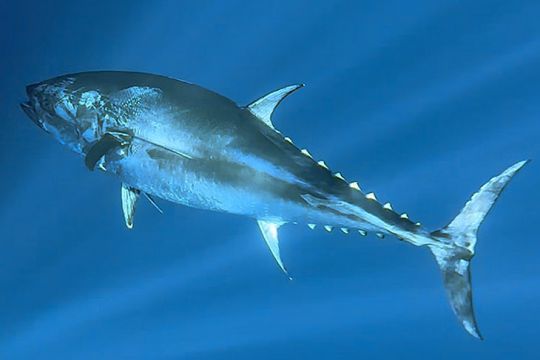
Fishing spots
Bluefin tuna are found in the Atlantic and Mediterranean. In France, they migrate increasingly northwards, crossing as far as the English Channel. They swim in open water, mainly on the surface and at mid-depth. It's usually necessary to head out to sea in search of concentrations of fish, especially near large drop-offs and ocean fronts. Satellite and meteorological readings can be used to find them, thanks to surface temperature fronts and the presence of plankton (chlorophyll), which can be found using TimeZero software.
A good depth sounder allows you to follow the evolution of the bluefin tuna's swimming depth to anticipate bites and be ready.
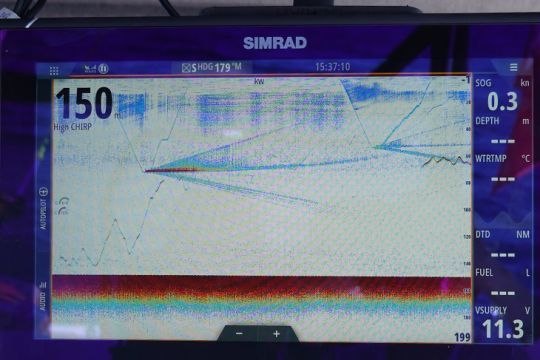
Fishing techniques
Bluefin tuna is caught in 3 main ways. The first is by grazing. This involves continuous baiting by cutting sardine cubes at regular intervals or using a robotized baiter. The rods are placed at different depths and a balloon placed on the surface of the water allows you to quickly see the slightest touch. Powerful rods and spinning reels are highly recommended.
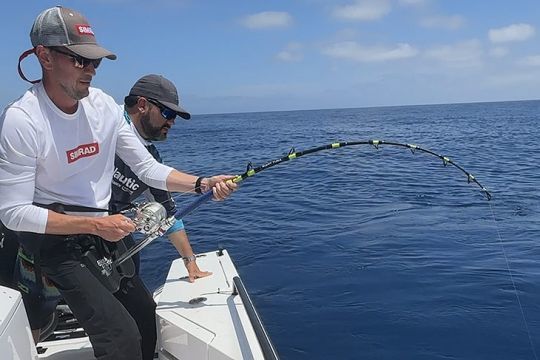
Another technique is free-line fishing with a livebait. You can set a livebait on a scramble or throw the livebait on a chase and leave the pick-up open to let the unsuspecting tuna gobble. Last but not least, you can approach flushes to stalk tuna using hard lures such as poppers and jerkbaits.
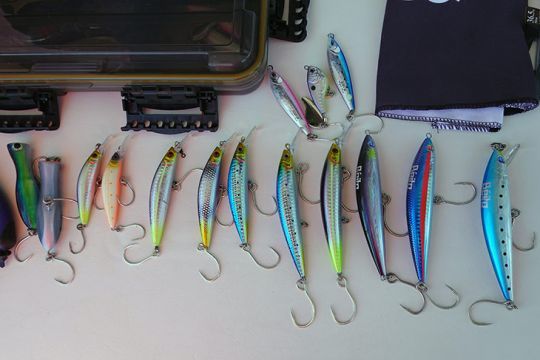
You can also cast a small soft lure such as a comma behind a bubble.
Reproduction
Bluefin tuna approach the Mediterranean coast in spring to spawn, particularly in Spain. They live in waters above 14°C with a salinity of at least 3.5%. Bluefin tuna grow to a size of 25 to 30 cm (350 to 500 g) at 3 months, 60 to 70 cm (3.5 to 5 kg) at 1 year, 1.35 m (35 to 40 kg) at 5 years, 2 m (150 kg) at 10 years and 2.50 m (250 kg) at 15 years.
Size and weight
- Legal minimum size: 30 kg or 115 cm
- Size at sexual maturity: 135 cm
- Average size: 70 to 100 cm
- Maximum size: 4.60 m (900 kg)
- French record: 418 kg (Saint-Cyprien, Languedoc-Roussillon, 05/08/1995)
- World record: 678.58 kg (Nova Scotia, 10/26/1979)

Good to know
Keep a close eye on the birds, which provide valuable information about the imminent start of the hunt.
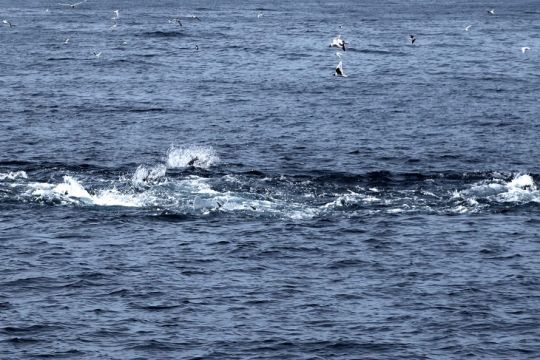
One or two birds flying rapidly in one direction potentially indicates the presence of forage fish.
